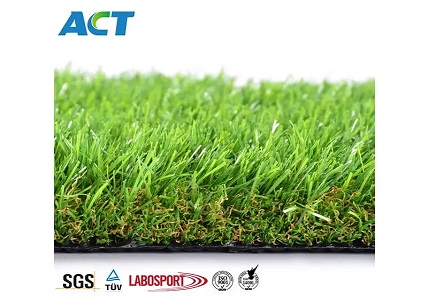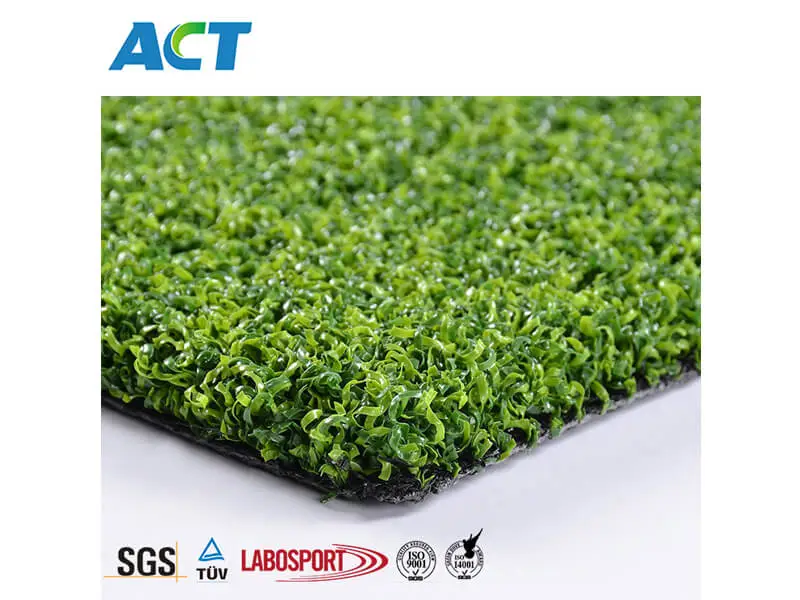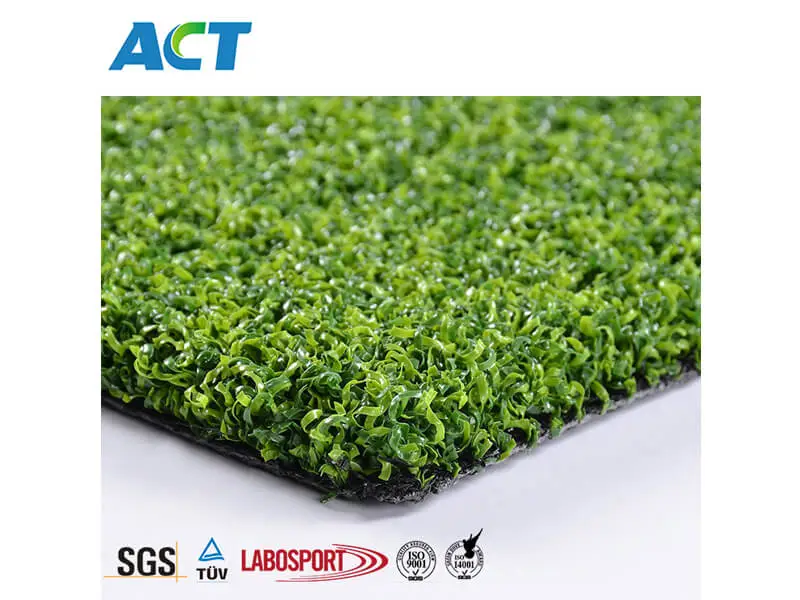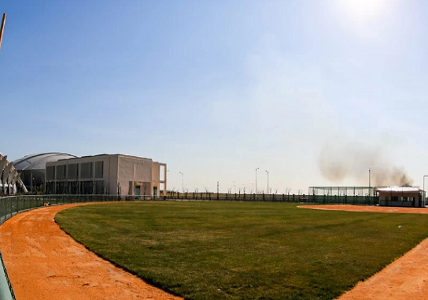
Fake grass is widely used in sports fields, recreational spaces, and landscape greening, among other fields. Its main parameters include material, grass height, density, pound value, base fabric, and backing glue. These factors collectively determine the performance, durability, and comfort of fake grass.
The material of fake grass plays a crucial role in its performance. Currently, common turf materials include polyethylene, polypropylene, and nylon, each with different characteristics suitable for various scenarios.
Soft to the touch, with an appearance and performance close to natural grass, especially suitable for 25mm fake grass. It is widely used in various sports fields and recreational venues and is the most common turf fiber raw material on the market.
The grass blades are harder, suitable for tennis courts, playgrounds, tracks, and similar venues. Its wear resistance is slightly inferior to polyethylene, but it is more affordable.
Although it has strong durability, due to its high price, it is mainly used in high-end venues or for special purposes.
The grass height of fake grass directly affects the appearance and user experience of the turf. Common grass heights are 10mm, 20mm, 25mm, 32mm, 40mm, etc., with 25mm fake grass widely used in various fields.
The higher the grass blades, the more grass used, resulting in better comfort and feel for athletes during activities. With a moderate grass height, 25mm fake grass provides a good visual effect and ensures comfort for athletes during activities.
25mm fake grass is suitable for football fields, school playgrounds, training grounds, kindergartens, and similar venues. Compared to other grass heights, 25mm turf is more practical and can meet the needs of various sports activities.
Tufting density is an important indicator of fake grass quality, representing the number of grass blades per square meter. 25mm fake grass generally has a high tufting density, ensuring the firmness and durability of the turf. The higher the density, the longer the turf's lifespan.
Pound value refers to the thickness of a single grass blade. The higher the value, the thicker the grass blade, and the higher the overall quality of the turf. 25mm fake grass usually chooses higher pound values (such as above 15000DTEX) to ensure its wear resistance and compression resistance, particularly suitable for venues with heavy usage.
25mm fake grass is suitable for various occasions, especially performing excellently in sports and children's activities. The following are common application scenarios:
Due to its moderate grass height, 25mm fake grass is suitable for training fields and competition venues. To enhance wear resistance, rubber granules are often added to football field fake grass, with lower density but higher DTEX to cope with frequent use.
25mm fake grass can provide a comfortable sports environment, especially suitable for medium and small school playgrounds and training grounds.
Due to its lower grass height, 25mm fake grass is suitable for children's activity areas, providing a safe and comfortable activity environment.
25mm fake grass has a natural appearance and a soft touch, widely used in parks, courtyards, commercial recreational areas, and similar places, creating a green and lush environment.
25mm fake grass has various advantages, including moderate grass height, higher density and pound value, and good comfort and durability. Whether used for sports fields, school playgrounds, or landscape greening, 25mm fake grass can provide excellent performance and a longer service life. When choosing fake grass, a grass height of 25mm is often an ideal choice, meeting athletic needs while adding beauty and practicality to the venue.





